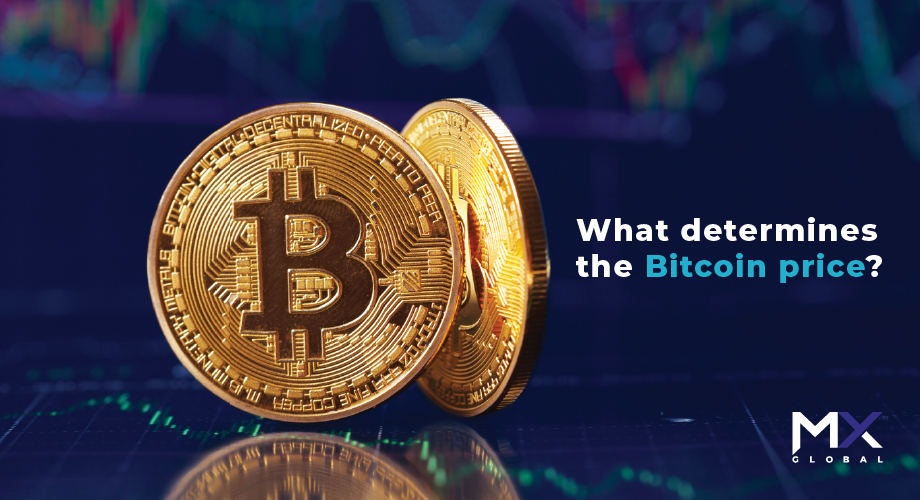The value of Bitcoin is not determined by a single organization such as a central bank, unlike fiat currencies such as the Euro or the US Dollar. Instead, supply and demand, or, to put it another way, the price people are willing to pay for it, determines the price.
Clearly stated, when there is more demand for Bitcoin, the price rises, and when there is less demand, the price falls. Demand is influenced by a range of variables, including worldwide events such as stock and bond price falls and increases, as well as global economic developments such as the continuing trade war between the United States and China.
In contrast to monetary policy in nations with fiat currencies, which is susceptible to change in response to political and economic circumstances, the Bitcoin ecosystem is a totally decentralized monetary system. Since there is no one central body that governs the monetary basis, the generation of bitcoins follows comprehensive regulations in a highly tight protocol, which we’ve explained for you.
The Bitcoin network adheres to certain standards
The Bitcoin blockchain encrypts and records all transactions. Bitcoin network miners compete to be the first node to solve a hard cryptographic puzzle. The winner is designated the first legitimate block miner and earns the corresponding block reward.
Every 10 minutes, a new block is added to Bitcoin’s blockchain once all network members establish consensus on the legitimacy of a block.
Since Satoshi Nakamoto generated the first block, known as the ‘Genesis Block,’ all transactions in the Bitcoin network have followed an exact and unchangeable protocol. The block reward amount that miners get is the sole provision in the Bitcoin protocol that changes from time to time, thanks to a process known as “Block Reward Halving.”
What causes the price of Bitcoin to fluctuate?
Despite the fact that Bitcoin has the biggest trading volume among cryptocurrencies, it is still a minor market in comparison to other global marketplaces. This means that prices move up or down more dramatically with less money involved. Bitcoin’s volatility would be quite comparable to gold’s if it had the same trading volume.
Demand would have to follow Bitcoin’s deflationary behavior to even theoretically keep prices steady because there are only a finite amount of bitcoins in circulation and the generation of new bitcoins follows strict rules with a continually declining output (due to reducing rewards for miners).
News occurrences that are either negative or positive for the reputation of Bitcoin, concern about the cryptocurrency’s future intrinsic worth as a store of wealth, currency risks for big Bitcoin holders in terms of liquidation, and security breaches may all have an impact on the Bitcoin price. Assuming Bitcoin had the same trading volume as gold, its average volatility would be fairly comparable.
Is it possible that the price of Bitcoin will go to zero?
Yes, to sum it up. Fiat currencies that are no longer in circulation are useless to everyone except collectors, who will likely pay a fortune for a 100-year-old piece of paper or coin. The perceived value of a currency determines its worth.
It is worth mentioning that disused currencies frequently collapsed as a factor of the introduction of replacements or incidents such as hyperinflation. These very events usually result in a severe depreciation of the affected currency. Hyperinflation is not feasible in the case of Bitcoin since it cannot be generated randomly and its creation is limited to a fixed amount.
Political pressure, technological problems, and other forms of media coverage that might possibly propagate the term of FUD: “Fear, Uncertainty, and Doubt” are the underlying drivers of a decrease in Bitcoin’s price. We may expect significant price surges as well as significant price drops until Bitcoin truly reaches the majority of the world; for the time being, volatility rules supreme.
Are you ready to dive into cryptocurrencies?
Join us for more updates: Facebook | Telegram | Linkedin | Twitter
MX Global– Built in Malaysia for Malaysians
DISCLAIMER:
Any opinions, news, research, analyses, prices, or other information discussed in this presentation or linked to from this presentation are provided as general market commentary and do not constitute investment advice.
MX Global Team does not accept liability for any loss or damage, including without limitation to, any loss of profit, which may arise directly or indirectly from the use of or reliance on such information.









